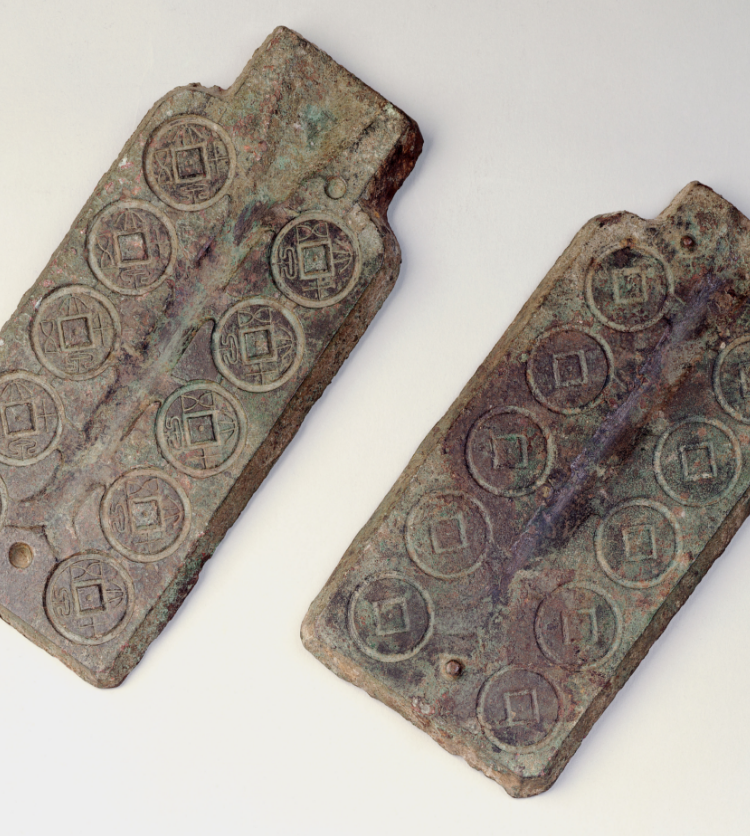Have you ever wondered how coins are made?
Coin molds were used in ancient China to cast metal coins, which were made of copper, iron, and even other materials including clay. This set of obverse and reverse copper molds was used during the Xin dynasty to cast large coins worth fifty small coins, called “daquan wushi”after their value. Written in mirrored seal script on the obverse of the coin are the Chinese characters for “daquan wushi”, while the reverse is left empty.
The two copper molds have rows of coin molds on the left and right. In the middle there is a straight flow channel. If you look carefully, you will find that the flow channel and each of the coin molds is connected. You can also look for the tenons and mortises on the two copper molds. There are two round protrusions on the reverse mold and two round cavities on the obverse mold. Using these tenons and mortises, the obverse and reverse molds can be fixed together so the smith can pour in molten copper from the gate, which then flows to each of the coins. After cooling, the mold can be opened to take out the coins. After polishing, the coins are done.
This typical coin mold from the Xin dynasty has been preserved intact. Because not many have survived to this day, it is a valuable object for researching the method for casting coins and the level of minting craftsmanship during the Xin dynasty.
